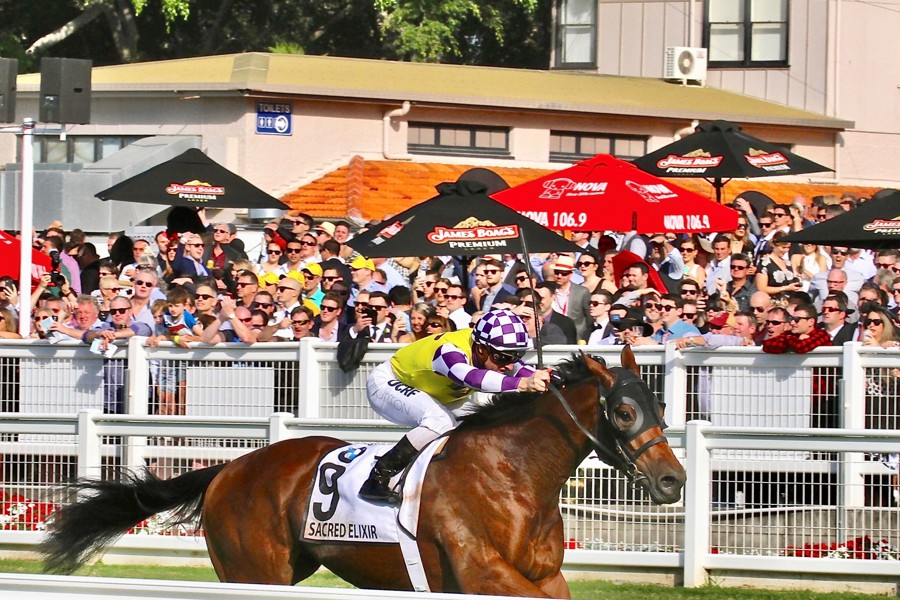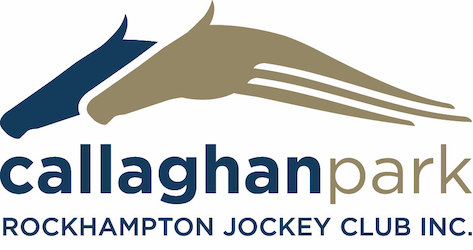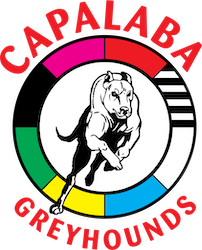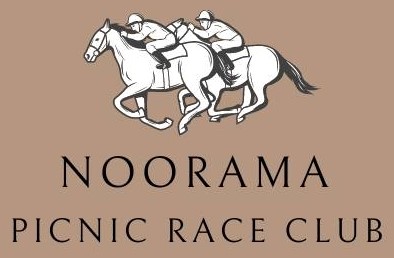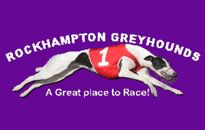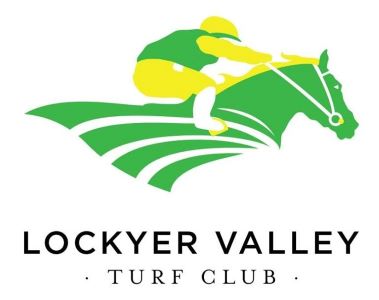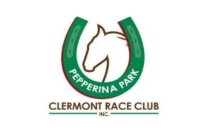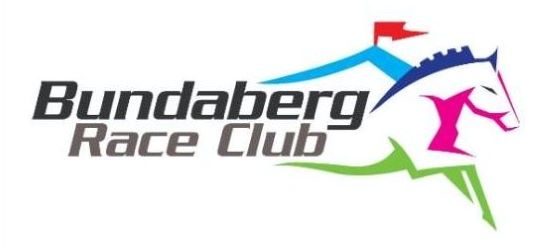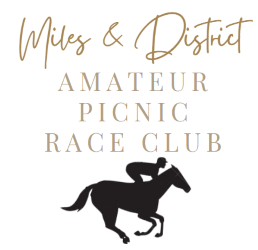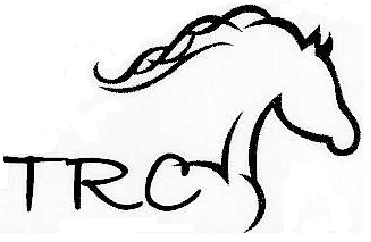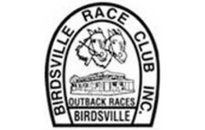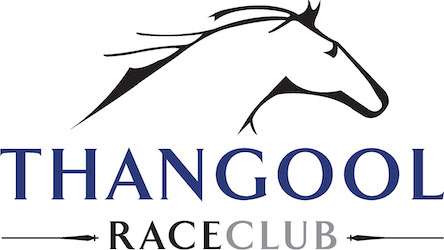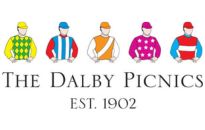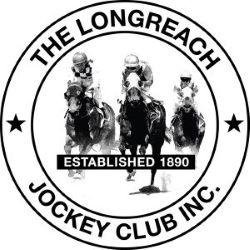
Tales Of The Past: Kiwis clean up Queensland silverware
By Ross Stanley
A swag of trophies have traversed the Tasman.
The politician William Pember Reeves, in his 1898 history of New Zealand with the title The Long White Cloud Aotearoa, wrote that it was cloud formations that were a guide for the early Polynesian navigators.
Although other possible meanings for the original Maori name for the North Island have floated around, one thing is certain - visitors from across the Tasman have no quibble about the credentials of the term, the Sunshine State.
Even if the westward trip fails to earn a cent, winter sojourns in Queensland do warm the cockles of human and equine hearts.
Seeking the elite
The following snippets cover the Group 1 jackpot hits by gallopers domiciled in New Zealand.
Brisbane presently hosts nine top tier events. The Brisbane Cup renewals prior to its downgrading in 2007 have been included. No New Zealand-based juveniles took out a Sires Produce Stakes during its Group 1 period.
The Stradbroke Handicap
In 1983, Graeme Rogerson’s charge Brenlaine, after picking up the minor money in Strawberry Road’s Powers Quality (1350m), prevailed in the Stradbroke with Gavan Duffy as pilot.
The Bellissimo gelding completed his lucrative tour of duty on rain affected venues with a third placing in the Doomben 10,000.
1985: Canterbury Belle was the pride of the region she was named after.
In the care of Riccarton’s Dave Kerr, the Beaufort Sea (USA) filly sported the province’s red-and-black colours. The only defeat in her first seven assignments was in the Bayer Classic, when she was frightened in the barrier, kicked out strongly and injured her legs.
Two more South Island successes preceded her three Brisbane appearances that earnt second money in both Queensland Guineas and Channel Seven Classic and Stradbroke glory for Grant Cooksley at 10/1.
1991: The wonderfully versatile Rough Habit was unbowed in 1991. The Roughcast gelding gathered up the QTC Byrne Hart Stakes, GCTC Hollindale (1800m), the Stradbroke (Jim Cassidy, 55kg, 6/4) by six panels in heavy conditions and the Doomben Cup.
1992: This time in the Stradbroke, John Wheeler’s stable star Rough Habit (J. Cassidy, 58.5kg,11/1) accounted for Barossa Boy, his nemesis by a nose in the Doomben 10,000.
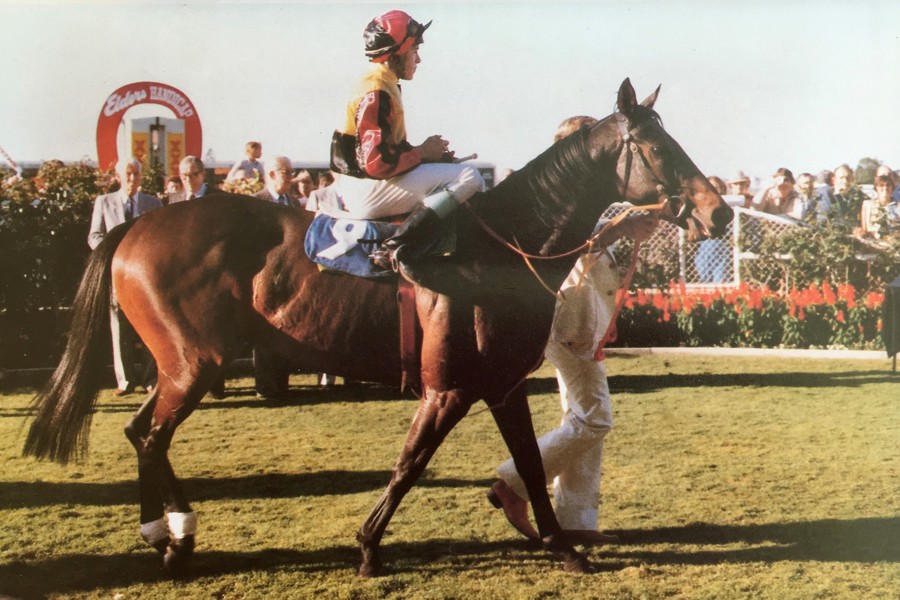
Brisbane Cup
1966: The Auckland Cup winner APA rallied for “Darby” McCarthy to regain the lead from the favourite, Tea Biscuit, near the mirror.
The Gabador gelding, trained by Major Seal, had the 1965 Waikato Gold Cup on his resume and the 1966 QTC Moreton Handicap in the lead up to his second success over two miles.
1973: Roy Higgins, the rider of the Merv Ritchie trained Irish Whip, lodged a successful protest against Tommy Smith’s candidate The Developer (Kevin Langby) on the grounds of interference from the 200m to the 100m. The margin was a short neck.
The head-on footage apparently showed Higgins was severely impeded in his attempts to use the whip.
1976: Balmerino, a three-year-old by Tritrac (FR), was born to the purple. His dam Dulcie (NZ) also produced Fileur, Fulmen, Gay Filou and Micheline (NZ), the mother of Surround, Lord Hybrow and Purple Patch.
Ralph Stuart, the Waikato dairy farmer that bred and owned the colt, named him after a Scottish village. Cambridge horseman Brian Smith put the polish on for 20 of his 22 victories, including two in Sydney, three from three in Brisbane and one at Hollywood Park in Los Angeles.
He was in the care of John Dunlop for his European ventures when he won in England, lost on protest in Italy and turned in a mighty second in Alleged’s 1977 FR Prix de l'Arc de Triomphe.
At Eagle Farm in 1976, his haul included the Brisbane Cup, PJ O’Shea Stakes and the Grand Prix. He missed the Derby because of a nomination oversight.
1981: Four Crowns, by a nose, provided Jimmy Cassidy, aged 18, with his initial Group 1 win. The duo also prevailed in the 1981 O’Shea Stakes for trainer David Enright.
Subsequently, the Acharacle (GB) gelding was injured and, thereafter, only registered a handful of placings.
1986: Marlon (David Walsh, 33/1) overcame a hoof problem to account for Foxseal and Rising Fear.
Trainer Bruce Marsh and owner Rob Mulcaster had previous joy with Shamrock (1981 Prime Minister’s Cup, 1982 O’Shea Stakes). He was by War Hawk with Globe of Light in the maternal line. Marlon, a Doomben winner during his earlier mission, matched that nick.
This time around, fine New Zealand form was followed by a second to Handy Proverb at Eagle Farm. Failures in the Prime Minister’s Cup and the O’Shea discouraged Cup punters.
1987: Limitless, a mare by Sir Tristram from the Zamazaan mare Coverless, earnt all of her black-type in Australia. The Royce Dowling-trained stayer garnered three in Sydney and the Brisbane Cup on a heavy track with Gavan Duffy aboard.
She lost by a short half-head to Dinky Flyer in the 1987 AJC Queen Elizabeth Stakes.
1989: Coshking (Brian Hibberd, 5/1), from Howie Mathews’ Otaki set up, was very game. The bay recorded nine wins, 27 placings and two fourths in Wellington Cups.
The Pag Asa-Coshqueen gelding made five brief Australian sorties, also picking up places in a Craven Plate, The Metropolitan and the 1989 Sydney Cup (on a bog Track) and first berth in VRC The Dalgety.
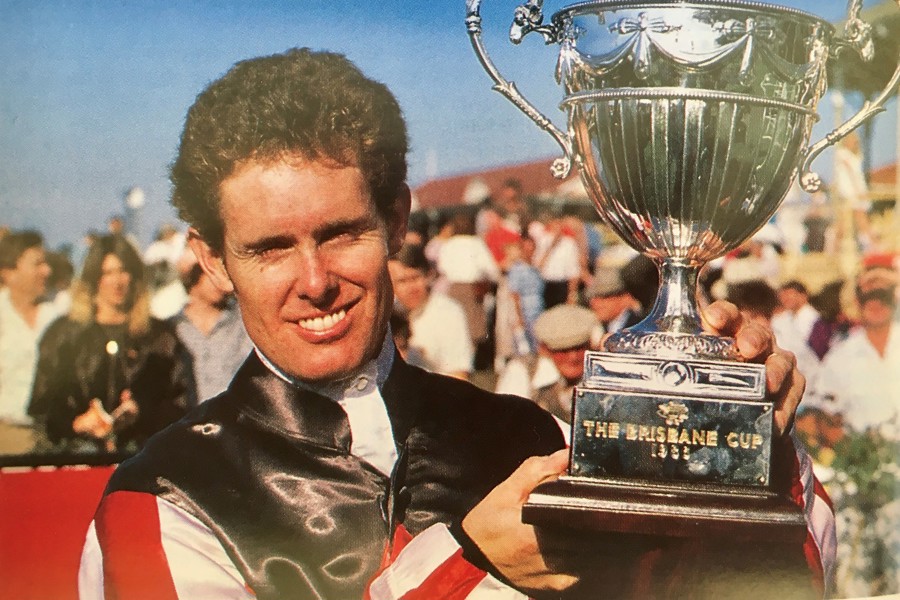
1990: Shuzohra, the Cup heroine for Errol Skelton and Shane Dye, was the best of Tom Shu’s (USA) offspring.
She was in fine form at home in the autumn, with two Group 3 successes over a mile. In Brisbane, she warmed up with two seconds and then two wins at Grafton including the Cup. Subsequently, a virus put her future in doubt.
After taking the honours in the Foxton Cup, the great-grand-daughter of Khorassan (Ire) swept up the 1990 O’Shea Stakes-Brisbane Cup double prior to finishing fifth in the Doomben Cup.
Shuzohra stepped up in the Melbourne spring with placings in the Caulfield and Sandown Cups and the VRC Turnbull Stakes with Better Loosen Up only a half-length ahead of her.
In 1991, she split Dr Grace and Castletown in The BMW. Another fine outcome was her half-head second to Castletown in a Wellington Cup (3200m).
1993: Barbut Delcia, prepared by Kevin Cullen, won the feature during her second Brisbane stay. In 1992, she was never worse than sixth in five tasks and was not disgraced as a longshot in the Queensland Oaks.
At home in the 1993 summer, the daughter of the Vain stallion Brilliant Invader chalked up four in a row including the St Leger and then finished fourth in Randwick’s version of that red riband.
Brilliant Invader’s maternal endowment suggested stamina via Agricola and Amarco, the dam of the 1960s pin up Tobin Bronze.
Although unplaced, chores in the 1993 Prime Minister’s Cup and the PJ O’Shea Stakes readied Barbut Delcia for her Brisbane Cup salute at 15/1 for Steve Sharman.
1994: Sky Flyer, with Bruce Compton in the pigskin, won the Cup after running second in the QTC Metropolitan Handicap and missing a place in the O’Shea Stakes.
Brian Deacon saddled up the son of Half Iced (1982 Japan Cup) that also fathered the dual Wellington Cup winner Ed.
Sky Flyer, in 1992, won the Werribee Cup and ran second in the Sandown Cup. In 1993, he was runner-up in the VRC Queen’s Cup.
2002: The Cup report in the New Zealand Herald by Mike Dillon indicated that Cambridge trainer Murray Baker was visibly upset that Barry Morton, the breeder-owner of Prized Gem had passed away two years before her Eagle Farm triumph.
Baker nearly sacked the chestnut before she had raced. Murray noted that, if it hadn't been a Morton horse, he would have given her up after her first two trials. For her last chance in a third trial, he told the jockey to really get into her and make her do it. She won!
Apprentice Michael Rodd chalked up his initial first grade victory on the bay. John Wallace, who was Baker’s Gold Coast host, had recommended Rodd for the key ride.
Prized Gem also won the 2002 HBR Kelt Capital Stakes and GCTC Prime Minister’s Cup and was an O’Shea Stakes placegetter.
Barry’s widow Billie, after racing Prized Gem, put her to Montjeu (Ire). The result was the Randwick Derby sash bearer Nom Du Jeu.
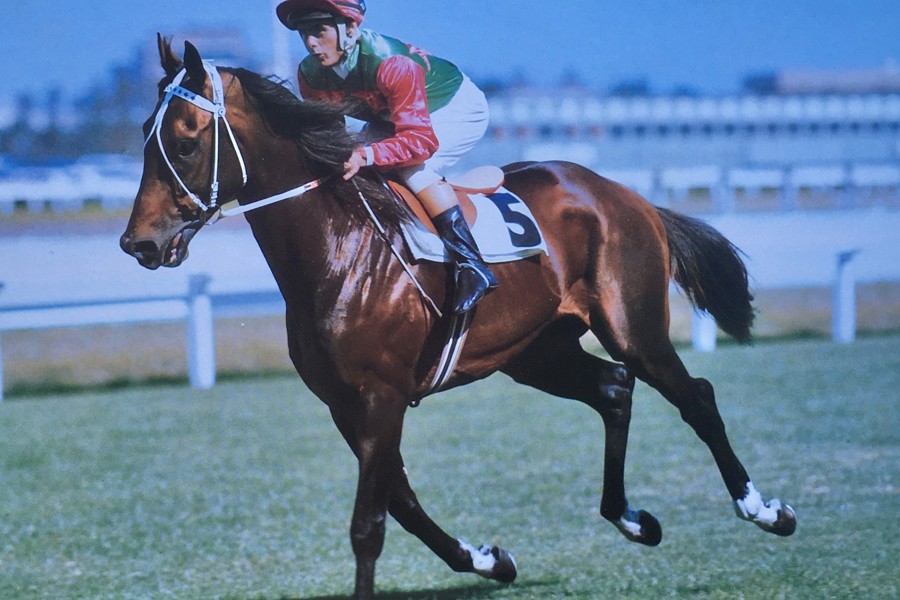
Doomben 10,000
1959: In the Stradbroke, Second Earl went down by a short-head to Grey Ghost. The bay hated the whip and its application seemed to be counter-productive.
In the Ten Thousand, the late three-year-old brought his tally to 11 wins and five placings. This time, trainer Bill Clifton issued the “no whip” instruction to Andy Tindall.
Second Earl, a grandson of Ajax and, like Tulloch, a grandson of Big Game (GB), picked up four homeland features plus the 1959 QTC Lightning and Healy Stakes.
He ran third at 40/1 in the 1960 Doomben 10,000 with 9.0 and barrier 19.
The bay, at 15/1, expressed his class by running Tulloch (evens) to a short head in the 1960 Chelmsford Stakes. A month later in the AJC George Main Stakes, the Kiwi turned the tables by a half-length.
1983: (MY) AXEMAN, after running second in the QTC Winfield Cup and failing when off his food in the Stradbroke, romped in for his regular hoop Warwick Robinson.
The chestnut, that trainer Kevin Griffin steered around the stables by the tail, was valiant in the Doomben Cup, going down with 58kg by a short neck to Lord Seaman (46kg).
The Crimson God (GB) gelding’s 1982 program in Melbourne produced a Mackinnon Stakes win and placings in the Cox Plate, Chirnside Handicap and VRC Linlithgow Stakes.
A year earlier at the same time, “Jacky’s” work yielded a Linlithgow victory and a third in the Toorak at Caulfield.
2019: (THE) Bostonian, trained by Tony Pike and ridden by Michael Cahill, posted the first of his three Group 1s.
Jimmy Choux’s son loved Queensland. All up, he won five from six opportunities here. His 2018 visit was a three from three effort that included the BRC Daybreak Lover Stakes and the Sunshine Coast Guineas.
Doomben Cup
1956: Fair Chance was a talented and versatile performer prepared by Doug Webster.
Ron Hutchinson booted home the 16/1 shot that jumped from gate 21.
The Fair’s Fair chestnut also added the 1956 QTC Exhibition Handicap and J.H.S. Barnes Stakes to his credentials.
1980: Golden Rhapsody landed the trophy for the Dave O’Sullivan-Peter Cook side.
The gelding by Sharivari from the Summertime mare Sound of Music (NZ) hit the right notes by chiming in with The XXXX (1800m) and the Tattersall’s Cup.
Later, the chestnut prevailed in the 1981 Cups at Ipswich and Gosford and the1982 ARC Air New Zealand Stakes (Gr 1).
1982: Double You Em’s Cup success saw New Zealander Diane Moseley become the first female jockey to ride a Group 1 winner in Australia.
The Double Nearco (USA) gelding, whose campaign was managed by Bruce Marsh,
was also close third at Doomben, sixth in the Tattersall’s Cup and second in Chairman’s Handicap.
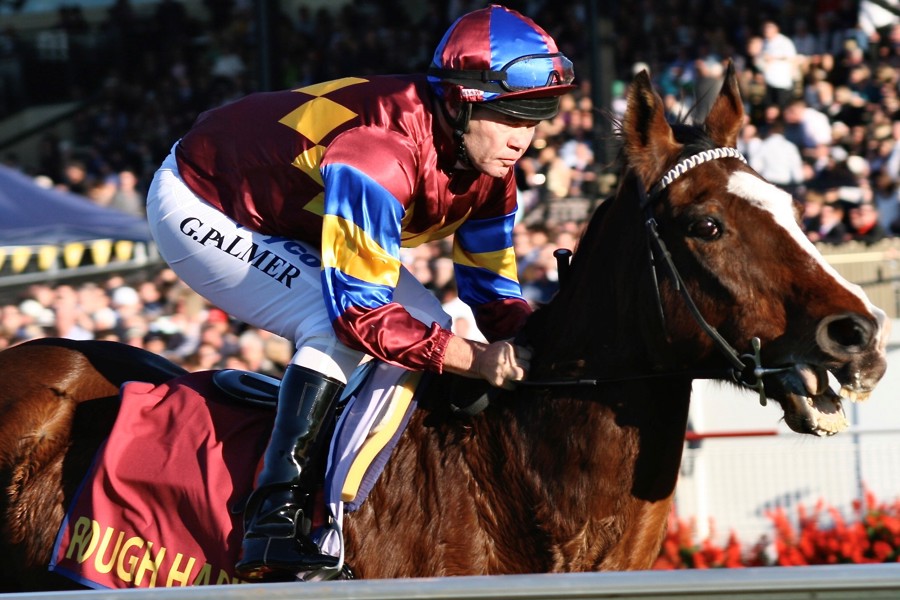
1985: Mr (My) Trick linked up with Kiwi hoop Maree Lyndon to land the Cup on E.A. “Robie” Robinson’s charge.
Takearisk’s son was cherry ripe, having won and finished third over the Eagle Farm mile and fourth in the Chairman’s.
During the horse’s 1984 Queensland program, he scored at the Gold Coast and Doomben (over 2200m) and was second in the Tattersall’s Mile.
1991: Rough Habit’s second Sunshine State jaunt concluded with a four-length thrashing of the Cup field.
1992: Rough Habit (J. Cassidy, gate 15, 11/8 on), after pulling out all stops, edged out Kinjite and ended his third incursion on a high.
1993: Rough Habit’s final Queensland win brought up a Cup hat trick. Certain Habit’s son’s other essays were the Byrne Hart (second), Doomben 10,000 (unplaced), the Hollindale (second) and the Stradbroke (fifth).
The warrior accumulated 21 black-type awards with the Group 1s registered as follows: Brisbane (six),New Zealand (one), Melbourne (one) and Sydney (three).
The pin up was the guest of honour for Stradbroke Day in 2010. With Gary Palmer in the saddle, he seemed as keen as ever.
1997: SAPIO, trained and part-owned by Sylvia Kay, was a tourist four times.
The tall galloper, unraced at two, had a good record before tackling Brisbane in 1994 when he was second in the QTC Grand Prix and sixth in the Derby.
The Vice Regal (NZ) gelding was fourth in the 1995 Brisbane Cup. After finishing second in Hong Kong in 1996, he skipped Queensland.
In 1997, he returned to Shatin but then made a profitable visit to Brisbane, surviving a Doomben Cup objection when ridden by Darryl Bradley, grabbing second prize in the Brisbane and proving supreme in Tattersall’s Cup.
The best of three efforts in 1998 were a close second in Intergaze’s O’Shea Stakes.
2001: King Keitel (Brian York, $13) did well to master Shogun Lodge at level weights.
The Keitel gelding, a winner on debut at age four, was underrated. He progressed to win four on the trot in 2000 and with two Group events to his credit, a crack at Queensland was justified.
Before the Cup, the bay was placed at Eagle Farm. Afterwards, he was in the frame for the O’Shea Stakes.
His best result in the spring was a Cox Plate fifth and a second in the Sandown Classic.
After a long absence from the track, a Brisbane visit in 2004 gleaned the minor money in the Chairman’s Handicap and Tattersall’s Cup.
King Keitel’s mentor Paul Jenkins is now a long-time Sunshine Coast trainer.
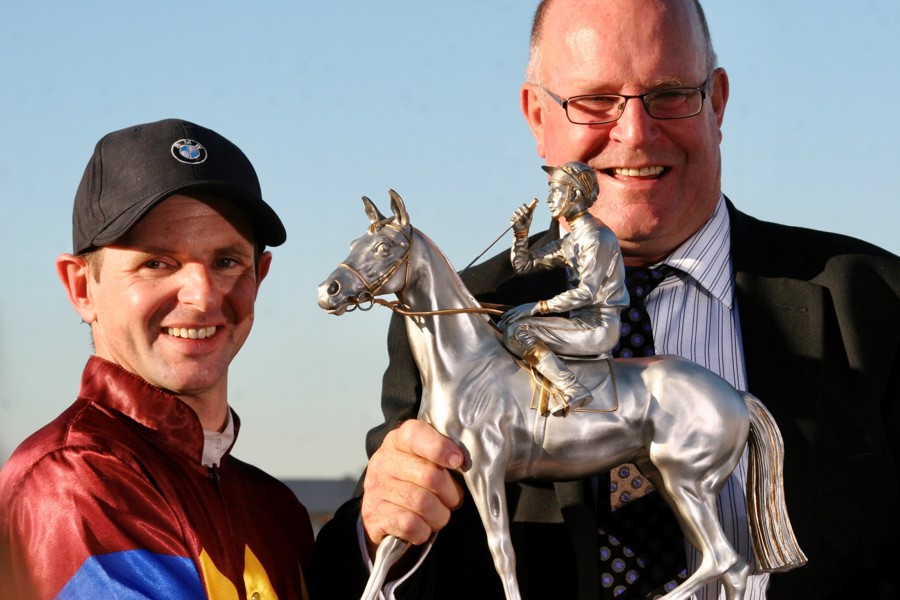
The Derby
1984: The Bill Winders-trained Librici plucked the Grand Prix-Derby double for Warwick Robinson. It was the Imperial Seal cuddy’s prime season with all six career wins and two seconds harvested in an eight start span.
The only other noteworthy glimpse was a fourth in the 1984 Mackinnon Stakes.
1990: Rough Habit’s three-year-old season comprised 13 outings for a remarkable 7-5-1 outcome.
In Brisbane, he was a close second in Stylish Century’s Doomben Classic and the Grand Prix.
In the Derby, Ross Elliot poured on pressure at the half mile and Rough Habit held off Ray’s Hope and Castletown. The final deposit was third money in the Doomben Cup.
1992: Trainer Dave O’Sullivan and his jockey son Lance comfortably donned the laurels with the 10/1 chance Royal Magic.
After posting two wins from her first six opportunities, the daughter of the Lord Ballina and the Oncidium (GB) mare Sunflower (NZ) won the 1991 Geelong Oaks Trial and was sixth in the Flemington classic.
After a spell, Royal Magic scored third-up at Paeroa. She delighted with an impressive third at the Gold Coast in Rough Habit’s Hollindale Stakes on a Heavy 10.
2009: Court Ruler, in the summer, won the Trentham Stakes (2100m, Group 2) for James McDonald before a New Zealand Derby fourth at even money.
Two months later, the Viking Ruler gelding was unplaced in the Doomben Classic and the Rough Habit Plate. The 8/1 pop was bred to be a classic contender with bloodline connections to Octagonal and Don Eduardo.
In the Derby, Court Ruler held sway over the future Melbourne Cup champion Shocking and Larry’s Never Late, a somewhat wry trifecta considering Larry Cassidy was on the winner.
2022: Jockey Leith Innes retired immediately after his masterful ride on Pinarello from barrier 17 in an event that New Zealand-born sophomores were the top five finishers.
The Tavistock gelding’s Cambridge conditioners Roger James and Robert Wellwood did well in the fitness department.
Because a heavy track ruled him out of the Rough Habit Plate, Pinarello had not started for five weeks,
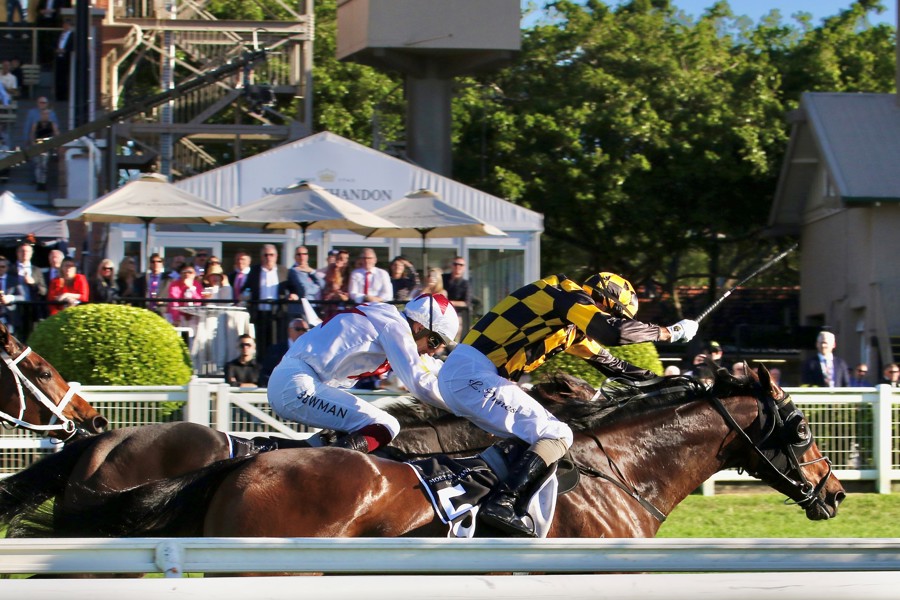
The Oaks
In 1992 Royal Magic completed the Oaks-Derby double, a feat achieved by Analie (1973) 1988 Bravery (1988) and Riva San (2008).
The chestnut returned the following season and picked up the GCTC Prime Minister’s Cup with Brian York board.
1997: Naturalism’s sister Crystal Palace (NZ) relished the heavy conditions after her tidy top off in the GCTC Hollindale Stakes and a second place in the Queensland Guineas to the upcoming Derby winner Yippyio.
Brian York parked on the rail so she would settle better than she did in the New Zealand Oaks.
Crystal Palace was raced by a Glenlogan Park Syndicate headed by Queenslander Jon Haseler. Trainer Steve Autridge had suggested she kick her career off in New Zealand.
It worked out well because she collected the Eulogy Stakes (Group 3)
Haseler applied a classic touch in the naming process, recalling that George Moore won the 1967 Epsom Derby on Royal Palace, Crystal Palace did the trick in the 1977 French Derby and the Glenlogan filly was by Palace Music.
With an 11: 3-3-1 line, Crystal Palace was retired to stud. A daughter in Palacio de Cristal was a dual stakes-winner.
2000: Giovana’s grand-dam, the Sir Tristram filly Tristina, scored a Queensland Derby in 1985. Her Oaks triumph was in the hands of Roger James and Chris Munce.
The Blues Traveller’s filly prospered with four homeland stakes victories that also included the Group 1s, the Waikato International Stakes, Thorndon Mile and ARC Oaks Stud Classic.
2001: Ethereal was bred and raced by Peter and Philip Vela. She was by Rhythm (USA) from Sir Tristram’s daughter Romanee Conti (NZ), a grand racemare whose six black-type wins included the Hong Kong International Cup, STC Queen of the Turf Stakes and AJC Emancipation Stakes.
Ethereal, with a 21:8-1-3 career line, banked in excess of $4.75 million, courtesy of the 2001 Doomben Roses-Queensland Oaks double, 2001 Caulfield-Melbourne Cup double and the 2002 The BMW.
Sheila Laxon, who now trains on the Sunshine Coast, has an outstanding history with horses while jockey Scott Seamer and Ethereal fitted like hand and glove.
2004: Vouvray, a French town that gives its name to white wine, was the toast of bookmakers. The Zabeel-Real Success filly, trained by Paul O’Sullivan and partnered by Chris Munce started at 16/1.
Later, with Peter Moody, she was placed in the 2004 Mackinnon Stakes and the 2005 Ranvet Stakes and The BMW.
2011: Before Scarlett Lady took out the Doomben Roses, the Savabeel filly from Graeme Rogerson’s North Island yard had won four in a row at home.
James McDonald, her winning partner for those five tasks and all eight career successes, opened his Group 1 account with her in the Queensland Oaks.
Scarlett Lady’s dam, the (Mr) Ironclad mare On Call, collected the Feilding Cup over ground.
2012: Quintessential prevailed for the John Sargent-Damian Browne combination.
Her sprinting sire Fast’N’Famous that logged six from 13. His best success was the 2006 VRC Gilgai Stakes.
There were Star Kingdom influences on both sides of Quintessential’s pedigree. Nijinsky, Secretariat and Roberto are ancestors of her dam Florette (USA).
Quintessential saluted in the 2012 WRC Desert Gold Stakes for the distaff category. In 2013, she bagged Doomben’s Chairman’s Handicap and the O'Shea Stakes’ equivalent.
2016: Because Provocative needed prize money to make the field, Tony Pike successfully sought out an Ipswich middle distance offering. Leith Innes had the reins of the daughter of Zabeel and Betwixt (2009 Tasmanian Derby) in the classic.
A tendon issue after Provocative’s next run at Caulfield in the spring ended her time on the turf.
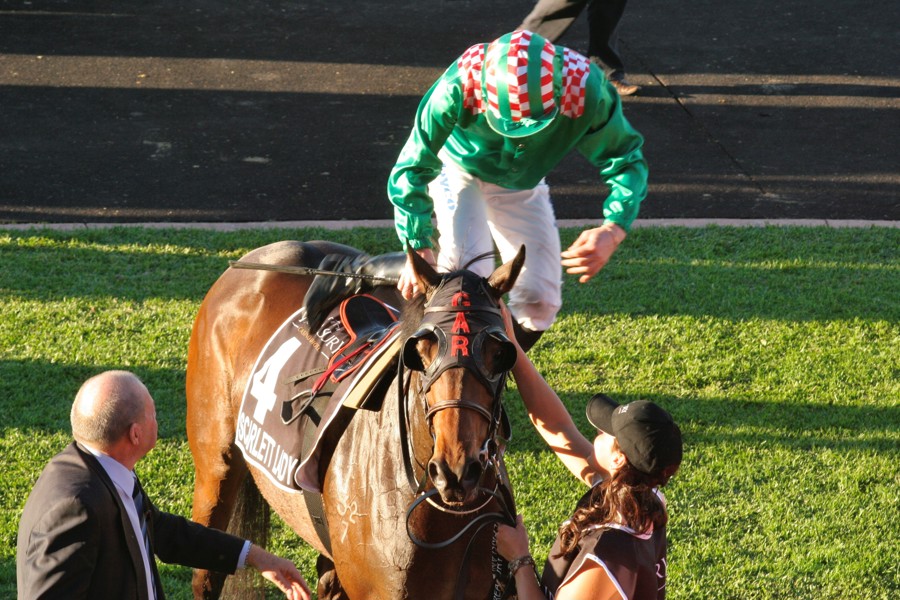
J. J. Atkins Stakes
1986: One Guinea (Neil Williams,10/1) was a Roger Lang-trained two-year-old by One Pound Sterling, the sire of (Mr) McGinity, (Mr) Ironclad and Castletown, the stalwart that collected three Wellington Cups, 1992 Caulfield Stakes and the 1991 AJC St Leger.
The grey’s dam Sugar Pie was related to Chantal (1966 Epsom) and Our Fun, the mother of the 1974 Stradbroke winner Go Fun.
2005: Darci Brahma (Scott Seamer, 12/1), a colt by Danehill from the SAJC Australasian Oaks-winner Grand Echezeaux, was bred by Peter and Philip Vela. The bay was bought as a yearling by Te Akau’s David Ellis for $1.1 million.
The member of Mark Walker’s Matamata string put together five Group 1s that embraced the 2005 WRC New Zealand Guineas, WRC Telegraph Handicap and the Waikato Sprint.
The progeny of Zabeel’s grandson includes Gust of Wind (2015 ATC Australian Oaks), Artistic (2012 New Zealand Oaks) and nine other homeland Group 1 winners.
2016: Sacred Elixir, the victor for the Tony Pike-Zac Purton unit, was by the Montjeu (Ire) stallion Pour Moi (2011 Epsom Derby) from the Stravinsky mare Baltika. She was the granddaughter of Zabeel (NZ) and Horlicks (NZ), the 1989 Japan Cup heroine.
The colt, that won the MVRC Vase, the Caulfield Guineas Prelude and defeated all except Prize Icon in the VRC Derby, was raced by Hong Kong interests. Accordingly, his Australian chapter was brief.
Pike’s pair Sacred Elixir and Provocative kicked their majors at the same Eagle Farm meeting.
Tatt’s Tiara
La Sizeranne is the event’s only New Zealand-based winner. She won the last Group 2 edition for the Roger James-Michael Rodd combination in 2006.
BRC Kingsford Smith (formerly BTC) Cup
2006: Gee I Jane was first on the honour roll for the Group 1 phase. The daughter of the Rainbow Quest stallion Jahafil from Neville Couchman’s Cambridge establishment was handled by Scott Seamer.
Earlier, the bay displayed her class by annexing the WRC Telegraph Stakes (Gr 1).
2019: The Bostonian had more starts in Australia than in his native land. His only miss in Queensland was an unusual flop in the 2019 Stradbroke.
In the south, he won the 2020 ATC Canterbury Stakes was second in the George Ryder Stakes and the 2019 MRC Schillaci Stakes.
(*****)
Punters have learnt not to underestimate New Zealand contenders. They often thrive and surpass expectations.
The equine aspirants have been particularly adept over longer distances and in the wet.
As well as the raiders, there are also a host of former New Zealand trainers and jockeys that have gone on to fame and fortune after resettling in Australia.
It is a sure bet that some Kiwis will be winging eastward after the 2024 Queensland Racing Carnival with some valuable items in their luggage.
